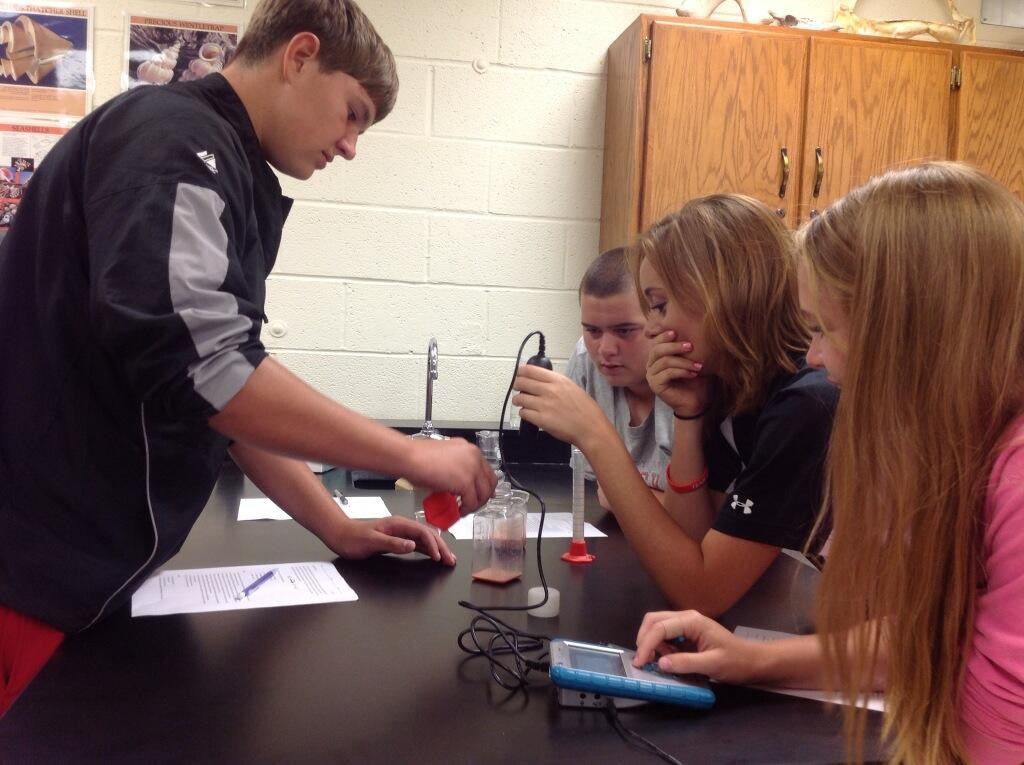Why Do I Put Myself Through This?
I have a few reasons that I think it is super important for high school students to know how to write a scientific paper. First, one of our school goals at Aurora is to improve reading and writing skills across the curriculum. This is a wonderful opportunity for them to practice both their reading and writing. They practice their reading because they have to find credible resources on-line and extract useful information from them. Then they have to summarize the articles in their own words to make it fit into their paper. They of course practice their writing by using proper grammar and style in their paper. Another reason I have students write a scientific paper is because writing formal paper is going to be important for them if they continue their education in college. Any major will require students to be well written, and if any of my students choose to pursue science, they will be expected to be able to write a 5-10 page scientific paper. I want to expose them to writing a scientific paper in high school before they get to college. It is better for them to struggle through it as a high school sophomore, where I can give them lots of advice and time and encouragement, then to never have them do it and be unprepared when they get to college. When I was in college, I had the privilege to lead a few labs, and during that time I got to know my professors fairly well. One the the biggest complaints science professors and Wayne State College had about incoming freshman was that they can't write scientific papers. This is frustrating for professors who feel like they are teaching junior high skills to college freshman, and it is frustrating for students who feel like professors have unattainable expectations for something they have never done before. Hopefully, because of this assignment, my students will be more prepared to face these challenges than the average high school student.
What Is The Assignment Like?
As I mentioned in a previous blog (Plant Project), we do a project where students try to get radish plants to grow better using household items. Then, I explain what things a good scientific paper should include.
- A descriptive title
- Abstract: summarize your entire paper into a paragraph.
- Object: 2-3 sentences (include hypothesis)
- Introduction: why is the experiment important, what do plants need to grow, what is in your independent variable that should help them grow or hurt their growth? (Have at least 2 internet sources)
- Methods and Materials: explain what you did so I could do your experiment at home.
- Results: have a graph showing your results with a paragraph explaining it.
- Conclusion: Was your hypothesis right or wrong? Why did you get the results you got? How could you make your experiment better for next time? What are the implications of your project? (Have at least two internet sources)
What Challenges Do Students Present?
There are a few challenges that students present that get on my nerves and make the project more difficult. The first one is "How long does it have to be." I do not know when or where they get it in their heads that all writing assignments are good if they are long enough and bad if they are too short. If you can get everything you need to include in a paragraph that is great. I wonder how many English teachers focus more on quantity rather than quality. (I guess it is easier to tell a student that they failed because they don't have 500 words than it is to explain why their writing is poor.) I probably had to tell my students 25 times that I don't care how long it is as long as they explain everything I ask them to explain well.
Another challenge that comes up is getting students to wrap their heads around a writing assignment that takes more than a 1/2 hour to complete. They are so used to scribbling together a crappy writing assignment the period before it is due (and passing because they have enough words) that they can't even contemplate spending several days and multiple hours making something they can be proud of.
I read an article about our culture (Losing Is Good For You) that talks about students thinking they can just show up, meet the minimum requirements and still get an A. They are so focused on "what is least I can do", that it never occurs to them to take the time to make something they are truly proud of.
Final Thoughts
I know that writing a scientific paper is challenging and difficult, but I strongly believe it is worth the time and effort. I am very excited to read a few of my students' papers because I know they will be wonderful. For I the time I spend focusing on the students who complain the loudest or are the laziest, there are just as many students working extremely hard to make a wonderful paper. I will post links to some of the best papers, so you can see all the hard work that went into them.
Grapefruit peels
Green Tea
Egg shells

.JPG)
.JPG)
.JPG)
.JPG)
.JPG)
.JPG)
.JPG)
.JPG)
.JPG)

.JPG)
.JPG)
.JPG)
.JPG)








